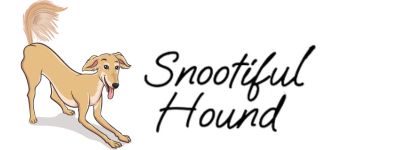The greyhound breed belongs to the sighthound family of dogs and is perhaps the most well-known member, and is one of the most ancient breeds of dog alive. In fact, it is the only breed of dog mentioned in the bible! They have the typical sighthound body shape, characterised by the slim head, broad chest and slender waist, not to mention their lightning speed.
Many people often wonder if greyhounds are lazy. You would be forgiven for thinking so as they certainly do have a penchant for snoozing throughout most of the day (and often looking like they’ve been in a car crash whilst doing it!). However, Greyhounds are sprinters. They have been bred for short bursts of pace, after which they’re quite content to sleep it off.
Do greyhounds make good pets?
Unfortunately, many greyhounds are bred for racing and often don’t get to experience the love of being a pet until they’re rescued but ask anybody that’s had one and they’ll tell you that greyhounds make incredible pets!
I occasionally have the privilege of walking greyhound rescues waiting for a home, and they really are such gentle souls. They can have an independent spirit and be aloof with new faces, but once they’re a part of your family, they form a strong bond with you and can become very affectionate.
A common misconception is that with an athletic dog like a greyhound, they must need SO much exercise, but this couldn’t be further from the truth. Greyhounds are sprinters, so they would benefit from really being able to stretch their legs every now and then, but ultimately, they have quite low exercise needs and you’ll find them sleeping for most of the day beyond that. This can make them great for apartment living, and greyhounds are usually pretty good at being left alone too. You’ll also be treated to the occasional bout of zoomies in doors which is as funny as it is adorable!
If you’re considering getting a greyhound, you should be sure to check out your local greyhound rescue as there’s no shortage of them looking for a home. The only thing to consider here is that these dogs haven’t experienced much outside of their racing kennels so you’ll have to take extra care when introducing them to small dogs in case they think it’s prey and to be chased.
Greyhounds are also very sensitive to the cold due to their low body fat and small coat, so you’ll need to make sure you wrap them up warm when venturing out in the winter, and possibly getting them some PJs to wear around the house during cold spells – picture the cuteness!
The other thing to be aware of is that with their classic sighthound body shape and high prey drive, they can be prone to slipping traditional harnesses and collars. That’s why it is recommended to use a greyhound harness or a greyhound martingale collar to keep them safe and secure.
With all dogs, most people will thankfully recommend positive reinforcement training techniques, but this is especially important for greyhounds. They can be quite sensitive, so it will work better and be more rewarding for you and your hound.
How fast is a greyhound?
A greyhound is the fastest dog in the world, and the second fastest land animal behind only the Cheetah. They can reach speeds of up to 45 miles per hour / 72 kilometres per hour and can reach top speed in just a few strides!
This is why it’s generally recommended to use a short greyhound lead on walks as if they reach top speed, they can pull you over and possibly hurt themselves if pulled to a sudden halt.
How big are greyhounds?
Greyhounds are considered to be large breeds, with a height between 27-30” / 69-76cm and weighing between 26-40kg. Naturally, male greyhounds tend to be slightly larger than their female counterparts.
In summary:
Greyhounds are renowned worldwide for their speed, but just as impressive is how gentle and affectionate they can be. Greyhounds are truly incredible dogs and will add so much to their owner’s life. Most people won’t ever look back after bringing one of these gentle creatures into their lives.
You might also like to check out our greyhound harness, greyhound martingale collars, or all of our greyhound collars here.

